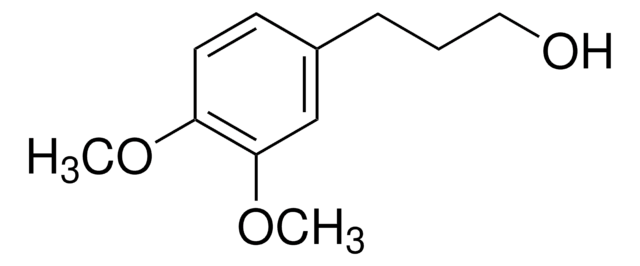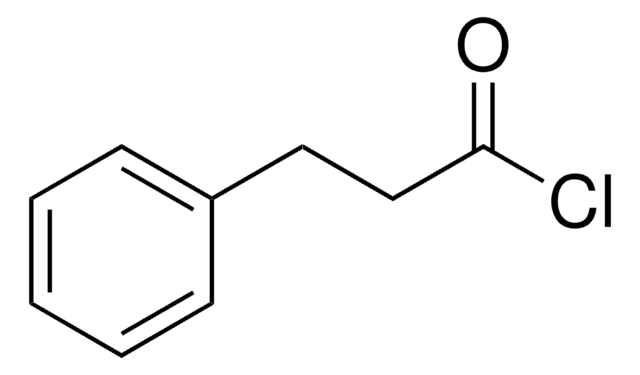Wichtige Dokumente
162345
3-(3,4-Dimethoxyphenyl)propionsäure
99%
Synonym(e):
3,4-Dimethoxy-hydrozimtsäure
About This Item
Empfohlene Produkte
Assay
99%
Form
solid
mp (Schmelzpunkt)
96-97 °C (lit.)
Funktionelle Gruppe
carboxylic acid
SMILES String
COc1ccc(CCC(O)=O)cc1OC
InChI
1S/C11H14O4/c1-14-9-5-3-8(4-6-11(12)13)7-10(9)15-2/h3,5,7H,4,6H2,1-2H3,(H,12,13)
InChIKey
LHHKQWQTBCTDQM-UHFFFAOYSA-N
Suchen Sie nach ähnlichen Produkten? Aufrufen Leitfaden zum Produktvergleich
Allgemeine Beschreibung
Anwendung
Lagerklassenschlüssel
11 - Combustible Solids
WGK
WGK 3
Flammpunkt (°F)
Not applicable
Flammpunkt (°C)
Not applicable
Persönliche Schutzausrüstung
Eyeshields, Gloves, type N95 (US)
Hier finden Sie alle aktuellen Versionen:
Besitzen Sie dieses Produkt bereits?
In der Dokumentenbibliothek finden Sie die Dokumentation zu den Produkten, die Sie kürzlich erworben haben.
Kunden haben sich ebenfalls angesehen
Active Filters
Unser Team von Wissenschaftlern verfügt über Erfahrung in allen Forschungsbereichen einschließlich Life Science, Materialwissenschaften, chemischer Synthese, Chromatographie, Analytik und vielen mehr..
Setzen Sie sich mit dem technischen Dienst in Verbindung.













